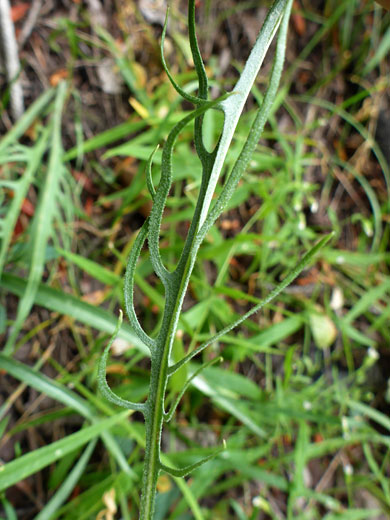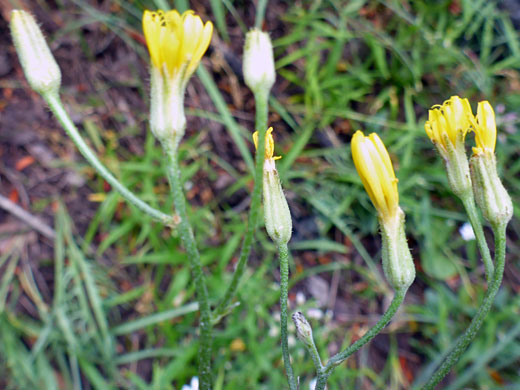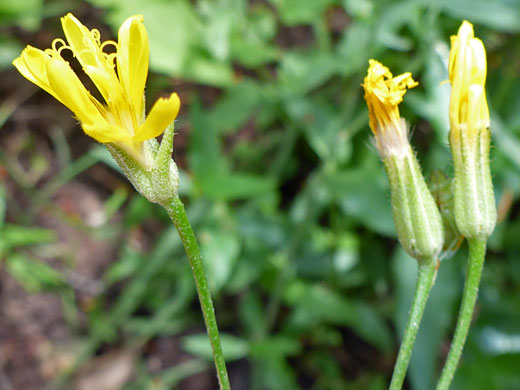Common names:
Slender hawksbeard, dark hawksbeard
Family:
Scientific name:
Crepis atribarba
Main flower color:
Range:
Nevada, Utah, Colorado, and states to the north
Height:
Up to 28 inches
Habitat:
Pine woodland, streambanks, grassland, sagebrush; up to 10,000 feet
Leaves:
Stalked, cauline and basal; pinnately divided into narrow, linear lobes, with (usually) entire margins. Leaf blades are up to 12 inches long
Season:
to
Crepis atribarba is most common in the northern Rocky Mountains; it also occurs in other mountainous regions, including across the Great Basin of Nevada and Utah. The leaves are perhaps the most distinctive feature as they are pinnately divided into relatively long, slender, well-separated lobes, tapering to a point. Leaves usually have sparse covering of tomentose hairs. Plants produce one or two stems, branching (if at all) above the middle.
The inflorescence is a flat-topped cluster, of up to 30 heads. Flowerheads have a slender involucre, around half an inch long, lined by between eight and 13 lance-shaped phyllaries, which are also tomentose, and may additionally be sparsely covered by short, black or greenish bristles. At the base of the involucre are between five and ten much shorter bractlets. The florets are all yellow, numbering from six to 35.
The inflorescence is a flat-topped cluster, of up to 30 heads. Flowerheads have a slender involucre, around half an inch long, lined by between eight and 13 lance-shaped phyllaries, which are also tomentose, and may additionally be sparsely covered by short, black or greenish bristles. At the base of the involucre are between five and ten much shorter bractlets. The florets are all yellow, numbering from six to 35.
All Contents © Copyright The American Southwest | Comments and Questions | Contribute | Site Map




